Did you know that Bulacan is home to many National Artists? We feel that our younger generation should be reminded of how proud we are and aspire to become one someday. Do you know what is a National Artist Award and the perks of having it?
National Artist Award
The National Artist Award is the highest distinction bestowed upon Filipino Artists whose body of work is recognized by their peers and, more importantly, by their countrymen as a sublime expression of Philippine music, dance, theatre, visual arts, literature, film, and media, arts, architecture, and design. These are artists who have promoted Filipino cultural identity and dignity through their art.
April 2, 1972, President Ferdinand E. Marcos, through proclamation no.1001, confers the award to deserving individuals recommended by the Cultural Center of the Philippines (CCP) and the National Commission for Culture the Arts (NCCA).
Honors and Privileges of National Artists
- The rank and title of National Artist, as proclaimed by the President of the Philippines;
- The insignia of a National Artist and a citation;
- A lifetime emolument and material and physical benefits comparable in value to those received by the highest officers of the land such as:
- Cash award of One Hundred Thousand Pesos (P100,000.00) net of
taxes, for living awardees; - Cash award of Seventy Five Thousand Pesos (P75,000.00) net of taxes, for posthumous awardees, payable to legal heir/s;
- A monthly life pension, medical and hospitalization benefits;
- Life insurance coverage for Awardees who are still insurable;
- A state funeral and burial at the Libingan ng mga Bayani;
- A place of honor, in line with protocular precedence, at national state functions, and recognition at cultural events.
- Cash award of One Hundred Thousand Pesos (P100,000.00) net of
National Artists from Bulacan
Guillermo E. Tolentino – Sculpture (1973)
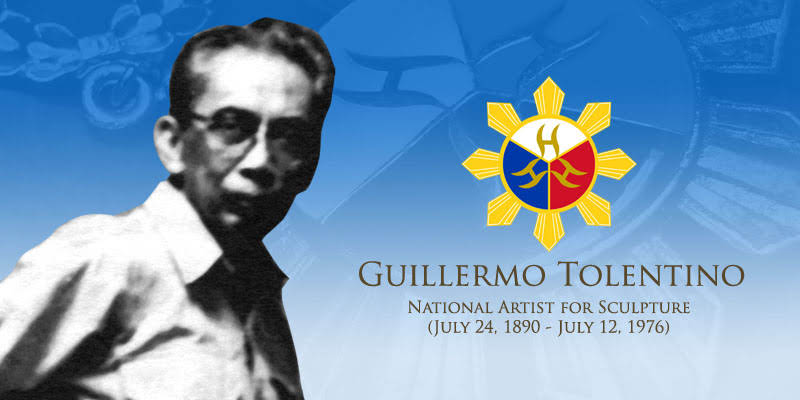
Guillermo Estrella Tolentino was born on July 24, 1890, in Malolos, Bulacan. He was a legendary Filipino sculptor and professor at the University of the Philippines. He is the artist behind some famous landmarks like the UP Oblation and the Bonifacio Monument in Caloocan.
In 1955, Tolentino retired from service at the University of the Philippines and returned to private practice. He received various awards and distinctions, most notably, his declaration as National Artist by President Ferdinand Marcos on May 15, 1973.
Tolentino died on July 12, 1976, and his remains were buried at the Libingan ng Mga Bayani as part of his privileges as a national artist.
Virgilio S. Almario – Literature (2003)
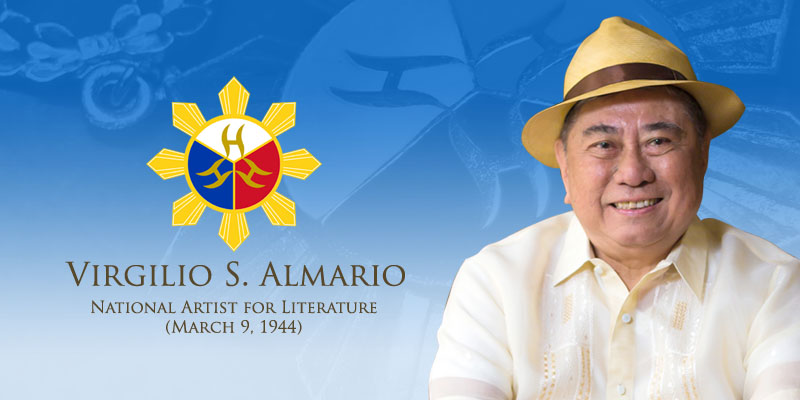
Virgilio Senadrin Almario was born on March 09, 1944, in Camias, San Miguel, Bulacan. He is a Filipino artist, poet, critic, literary historian, translator, teacher, and cultural manager. His pen name is Rio Alma.
Growing up in Bulacan among peasants, Almario sought his education in Manila and completed his A.B. Political Science degree at the University of the Philippines. A prolific writer spearheaded the second successful modernist movement in Filipino poetry and Rogelio G. Mangahas and Lamberto E. Antonio.
Ang Makata sa Panahon ng Makina (1972) is his earliest literary criticism, now considered the first book of literary criticism in the Filipino. Later, he set aside modernism and formalism in martial law and was interested in nationalism, politics, and the activist movement. As a critic, his critical works deal with the issue of the national language.
Aside from being a critic, Almario engaged in translating and editing. He has translated the best contemporary poets of the world. He has also translated the plays of Nick Joaquin, Bertolt Brecht, Euripedes, and Maxim Gorki for theater production. Other meaningful translations include the Philippines’ national hero’s famous works, José Rizal, namely Noli Me Tangere and El Filibusterismo. The Manila Critics Circle deemed it was the best translation.
Almario has received numerous awards, such as several Palanca Awards, two grand prizes from the Philippines’ Cultural Center, the Makata ng Taon of the Komisyon sa Wikang Filipino, the TOYM for literature, and the Southeast Asia Write Award of Bangkok.
He was an instructor at the Ateneo de Manila University from 1969-1972. He only took his M.A. in Filipino in 1974 at the University of the Philippines. In 2003, he was appointed Dean of the College of Arts and Letters in the said university.
Almario is also the founder and workshop director of the Linangan sa Imahen, Retorika, at Anyo (LIRA), an organization of poets who write in Filipino. Award-winning writers and poets such as Roberto and Rebecca Añonuevo, Romulo Baquiran Jr., Michael Coroza, Jerry Gracio, and Vim Nadera are but some of the products of the LIRA workshop.
Francisca R. Aquino – Dance (1973)
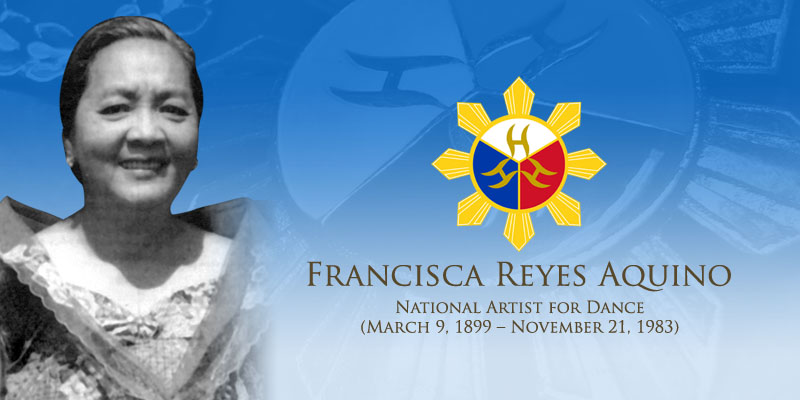
Francisca Reyes Aquino was born on March 9, 1899, in Lolomboy, Bocaue, Bulacan. Francisca is one of the Folk Dance Pioneers in the Philippines. This Bulakeña began her research on folk dances in the 1920s, making trips to remote barrios in Central and Northern Luzon. Her research on the unrecorded forms of local celebration, ritual, and sport resulted in a 1926 thesis titled “Philippine Folk Dances and Games” and explicitly arranged for use by teachers and playground instructors in public and private schools.
In the 1940s, she served as supervisor of physical education at the Bureau of Education that distributed her work and adapted the teaching of folk dancing as a medium of making young Filipinos aware of their cultural heritage. In 1954, she received the Republic Award of Merit given by the late Pres. Ramon Magsaysay for “outstanding contribution toward the advancement of Filipino culture.”
Ernani J. Cuenco – Music (1999)
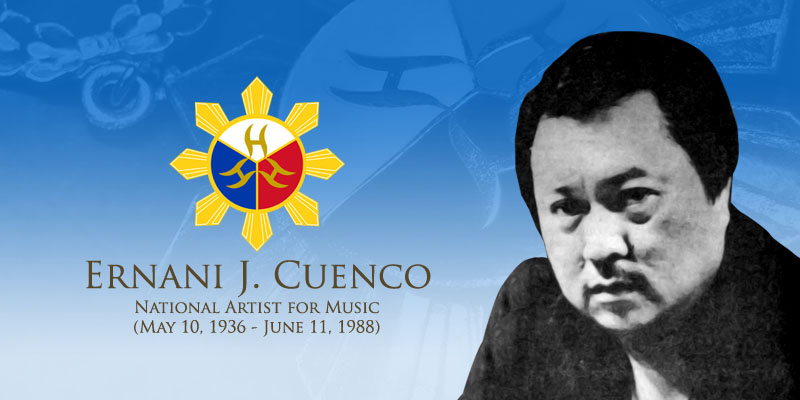
Ernani Joson Cuenco is a seasoned musician born on May 10, 1936, in Tikay, Malolos, Bulacan. A composer, film scorer, musical director, and music teacher, he wrote a unique and memorable body of works that resonate with the Filipino sense of musicality and embody an ingenious voice that raises the aesthetic dimensions of contemporary Filipino music.
Cuenco played with the Filipino Youth Symphony Orchestra, the Manila Symphony Orchestra from 1960 to 1968, and the Manila Chamber Soloists from 1966 to 1970. He completed a music degree in piano and cello from the University of Santo Tomas, where he also taught for decades until his death in 1988.
His songs and ballads include “Nahan, Kahit na Magtiis,” and “Diligin Mo ng Hamog ang Uhaw na Lupa,” “Pilipinas,” “Inang Bayan,” “Isang Dalangin,” “Kalesa,” “Bato sa Buhangin” and “Gaano Ko Ikaw Kamahal.” The latter song shows how Cuenco has enriched the Filipino love ballad by adding kundiman elements to it.
The song “Gaano Ko Ikaw Kamahal” collaborates with another Bulakenyo National Artist, Levi Celerio. Celeste Legaspi immortalized the song when she sang it a few decades ago. This classic is a popular wedding song in the Philippines, even up to this day.
Amado. V Hernandez – Literature (1973)
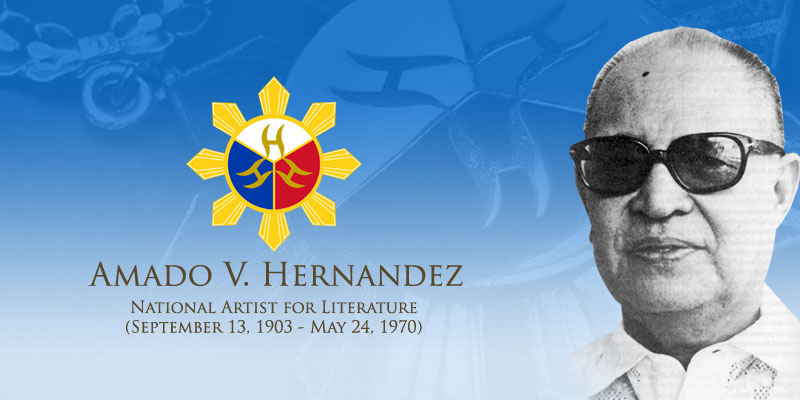
Amado “Ka Amado” Vera Hernandez (1903-1970) was born on September 13, 1903 in Hagonoy, Bulacan but grew up in Gagalangin, Tondo, Manila. In 1932, he married a Filipino actress and fellow National Artist, Honorata “Atang” de la Rama.
He was a poet, novelist, playwright, essayist, news correspondent, editor, labor leader, a guerilla intelligence officer against the Japanese forces. He was appointed as a city councilor of Manila, and a college professor in the most prominent state university here in the country, the University of the Philippines in Diliman.
He died of a heart attack on March 24, 1970, and three years after, he was posthumously awarded the National Artist for Literature by the then First Lady, Imelda Romualdez Marcos.
Col. Antonino Buenaventura – Music (1988)
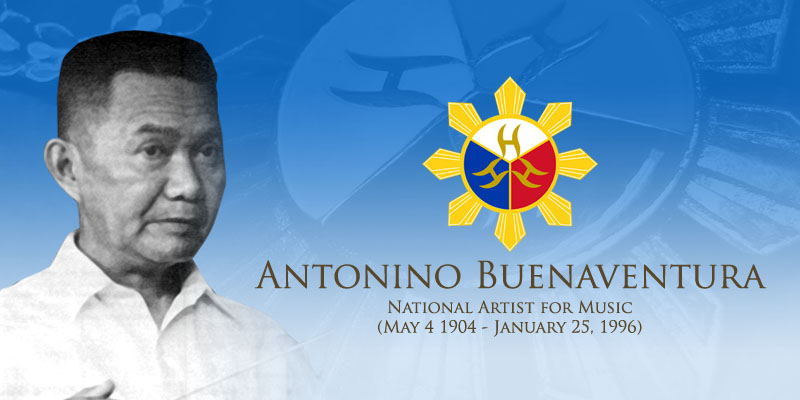
Colonel Antonino Ramirez Buenaventura was born on May 4, 1904, in Baliuag, Bulacan, to Leocandia Ramirez and Lucino Buenaventura, chief musician of the famous Spanish Artillery Band of Intramuros during that time. He married Rizalina Esconde, a violin teacher at UP, and had four children.
Antonino vigorously pursued a musical career that spanned seven decades of unwavering commitment to advancing Philippine music’s frontiers. In 1935, he joined Francisca Reyes-Aquino to research folksongs and dances that led to its popularization. Antonino composed songs, compositions for solo instruments, and symphonic and orchestral works based on the folksongs of various Philippine ethnic groups. He was also a conductor and restored the Philippine Army Band to its former prestige as one of the world’s finest military bands, making it “the only band that can sound like a symphony orchestra.”
He played the clarinet proficiently and has written several marches such as the “Triumphal March,” “Echoes of the Past,” “History Fantasy,” Second Symphony in E-flat, “Echoes from the Philippines,” “Ode to Freedom.” His orchestral music compositions include Concert Overture, Prelude, and Fugue in G Minor, Philippines Triumphant, Mindanao Sketches, and Symphony in C Major. One of his most famous compositions was “Pandanggo sa Ilaw.”
National Artists with Roots from Bulacan
Honorata ” Atang ” dela Rama – Theater and Music (1987)
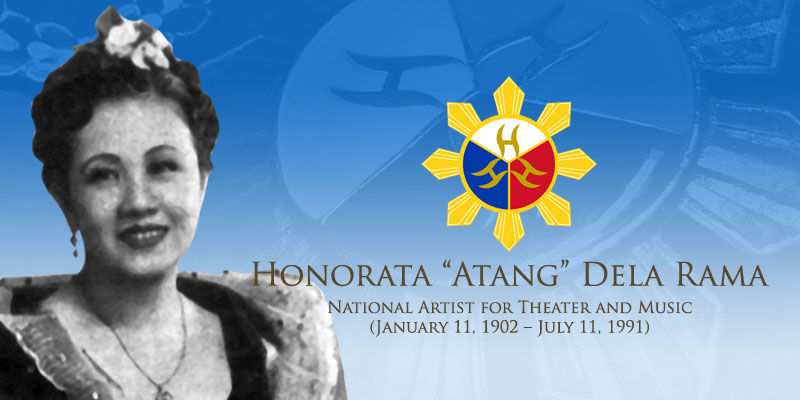
Honorata “Atang” Dela Rama-Hernandez was born in Pandacan, Manila, on January 11, 1902. She is commonly known as Atang de la Rama, the singer and “Vaudeville/Bodabil” performer who became the first Filipina film actress. She married a Bulakenyo and fellow National Artist, Amado Hernandez, in 1932. Her family’s roots are from Bocaue, according to Bulacan historians.
At age seven, Spanish zarzuelas such as Mascota, Sueño de un Vals, and Marina would cast Atang. She counts the role of an orphan in Pangarap ni Rosa as her most rewarding and satisfying role with realism, the stage sparkling with silver coins tossed by a teary-eyed audience.
“Atang” Dela Rama was formally honored as the Queen of Kundiman in 1979, then already 74 years old singing the same song (“Nabasag na Banga”) that she sang as a 15-year old girl in the “sarzuela/zarzuela” Dalagang Bukid. Atang became the first actress in the first locally produced Filipino film when she essayed the same role in the zarzuela’s film version.
Atang firmly believes that the “sarswela” and the “kundiman” express best the Filipino soul, and even performed kundiman and other Filipino songs for the Aetas or Negritos of Zambales and the Sierra Madre, the Bagobos of Davao, and other Lumad of Mindanao.
Gerardo de Leon – Cinema (1982)
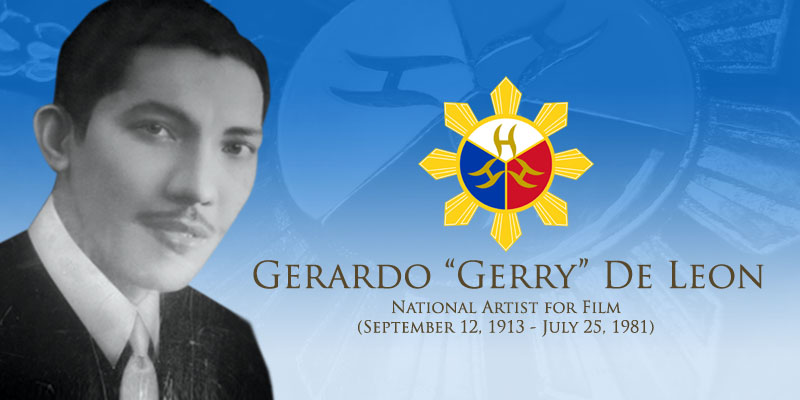
Gerardo “Gerry” de Leon was a Filipino actor turned film director who made his acting debut in the 1934 film “Ang Dangal.” According to online sources, he was born on September 12, 1913, in Manila. His father, Hermogenes Ilagan, was born in Bigaa (now Balagtas), Bulacan.
Read A Short History of Balagtas or Big Double-A (Bigaa) — from Late 1500’s to Present
He was born Gerardo de Leon Ilagan and was a member of the Ilagan clan of Philippine motion pictures, which includes Robert Arevalo (nephew), Jay Ilagan (nephew), Conrado Conde (brother), Angel Esmeralda (sister), Eddie Ilagan (brother), Ronaldo Valdez (nephew), musical scorer Tito Arevalo (brother), and his daughter Liberty Ilagan.
De Leon was a medical doctor by profession, but his ultimate love for film has won him over. He made eight more films as an actor before he became a director. He made his directorial debut in 1939’s Bahay-Kubo, starring Fely Vallejo (who he later married).
Andrea O. Veneracion – Music (1999)
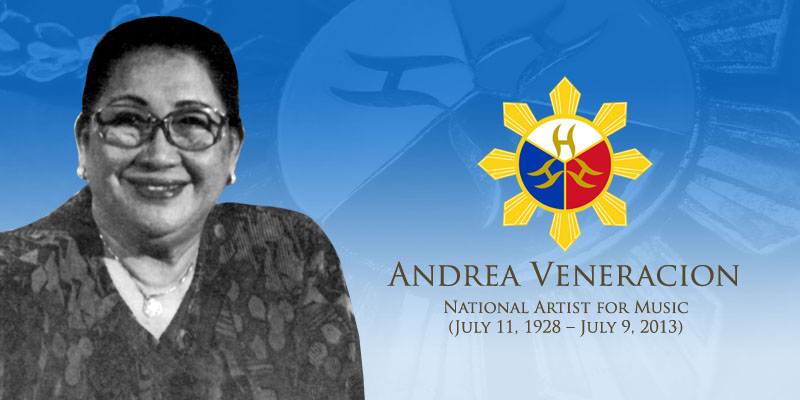
Andrea Ofilada Veneracion is highly esteemed for her achievements as a choirmaster and choral arranger. Two of her indispensable contributions in culture and the arts include founding the Philippine Madrigal Singers and spearheading the development of Philippine choral music.
A former faculty member of the UP College of Music and honorary chair of the Philippine Federation of Choral Music, she organized a cultural outreach program to provide music education and exposure in several provinces.
Born in Manila on July 11, 1928, she was recognized as an authority on choral music and performance and served as an adjudicator in international music competitions. Her family’s roots are said to be from the San Ildefonso and Santa Maria area.
Levi Celerio – Literature and Music (1997)
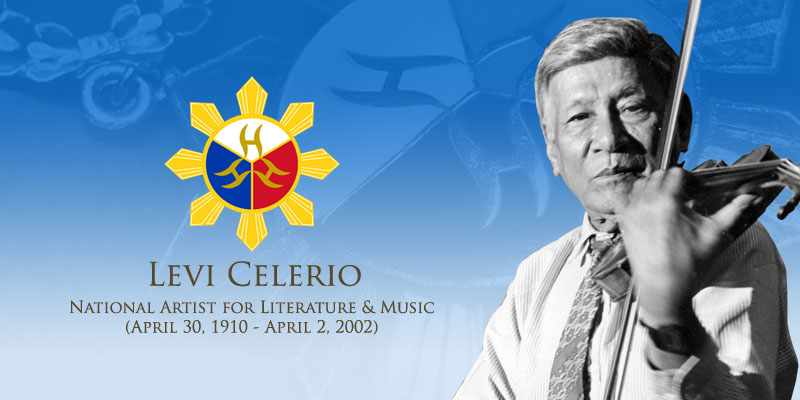
Levi Celerio was born on April 30, 1910, in Tondo, Manila, the Philippines. His parents hailed from Baliuag, Bulacan. Levi attended the University of the Philippines Conservatory of Music for a violinist course. His talent impressed the Conservatory’s Director, who recommended him for a scholarship at Manila’s prestigious Academy of Music.
Later, he enrolled at the Academy of Music, becoming the youngest member of the Manila Symphony Orchestra. Through this scholarship, he began his climb to become a renowned Filipino composer at home and abroad.
During his career, Celerio wrote over 4,000 songs. His unique ability to play music with a leaf earned him international acclaim. Even the Guinness Book of Record called him the “only leaf player in the world.”
So whenever you hear someone sings, “Ang Pasko ay Sumapit,” remember the name Levi Celerio.
Alice Reyes – Dance (2014)
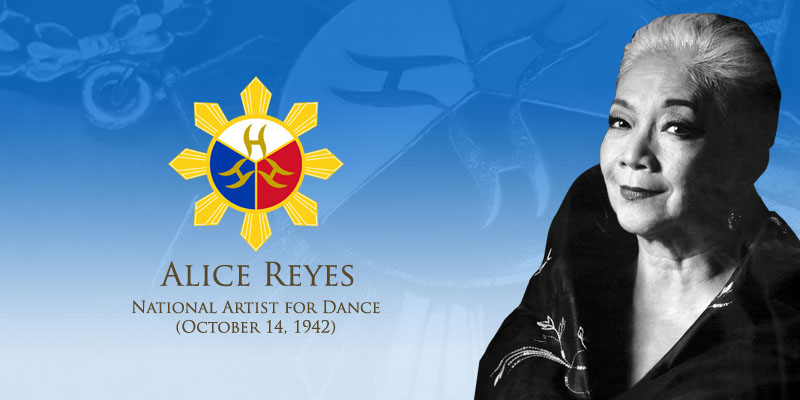
Alice Garcia Reyes van Doorn was born on October 14, 1942. She’s a natural-born dancer inheriting artistic genes from her wonderful parents. Her father, Ricardo Reyes, was known as Mr. Philippine Folk Dancer, and her mother, Adoracion Garcia, was a revered voice teacher in the country. We have confirmed that her family’s roots are from Malolos and Calumpit area through her Facebook page.
She trained under Leonor Orosa-Goquingco, a future national artist in creative dance, and Ricardo Cassell, a renowned ballet instructor of the Philippine Women’s University. She later went to America and enrolled in formal courses in modern dance and jazz. She even attended the Sarah Lawrence College in Westchester County, New York, to study dance and dance theory.
She has been one of Ballet Philippines’s founders, the premier ballet and contemporary dance company ever since. On June 20, 2014, President Benigno Aquino III proclaimed Alice Reyes as National Artist for Dance.
Jose T. Joya – Visual Arts (2003)

Born in Manila on June 3, 1931, Jose Tanig Joya is considered the Philippines’ pioneer and foremost ist painter. He is a painter and multimedia artist who distinguished himself by creating an authentic Filipino abstract idiom that transcended foreign influences. According to Bulakenyo historians, Joya’s hometown is San Miguel, Bulacan.
Most of his paintings of harmonious colors were inspired by Philippine landscapes, such as green rice paddies and golden harvest fields. He uses rice paper in collages places value on transparency, a common characteristic of folk art.
Antonio J. Molina – Music (1973)
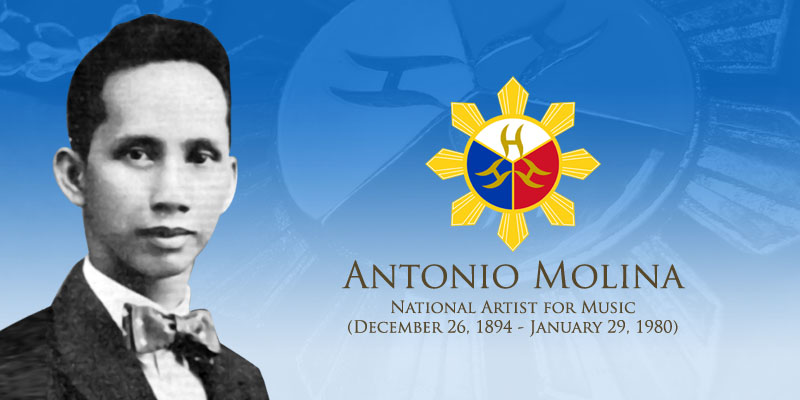
Antonio Jesus Naguiat Molina was born on December 20, 1894, in Quiapo, Manila. He is a versatile musician, composer, and music educator. He shares the same passion for kundiman with Nicanor Abelardo, a famous composer from San Miguel, and Francisco Santiago, a revered composer from Santa Maria.
Molina was awarded the National Artist for Music in 1973. The famous composer is from the Molina clan of Bambang, Bulakan, Bulacan.
Resources:
- Limos, M. (1970, January 01). Get to know all the national artists of the Philippines. Retrieved February 19, 2021, from https://www.esquiremag.ph/the-good-life/pursuits/national-artists-philippines-list-a1957-20190802-lfrm10
- Pressreader.com – your favorite newspapers and magazines. (n.d.). Retrieved February 19, 2021, from https://www.pressreader.com/philippines/philippine-daily-inquirer-1109/20101205/284653253655278
- List of national artists of the philippines: Govph. (n.d.). Retrieved February 19, 2021, from https://www.officialgazette.gov.ph/lists/national-artists-of-the-philippines/
- Advocacies. (n.d.). Retrieved February 19, 2021, from https://www.culturalcenter.gov.ph/pages/gender-and-development